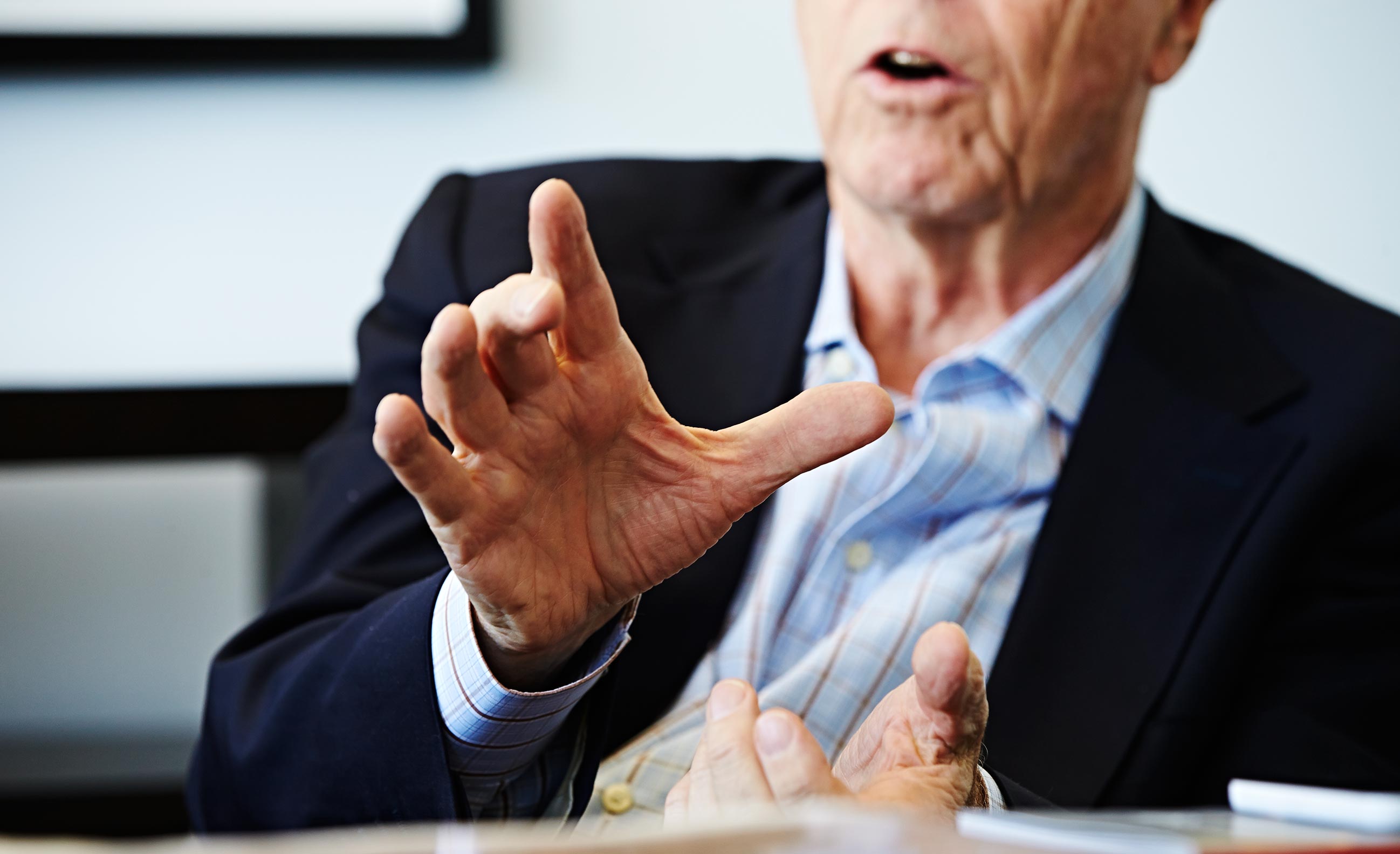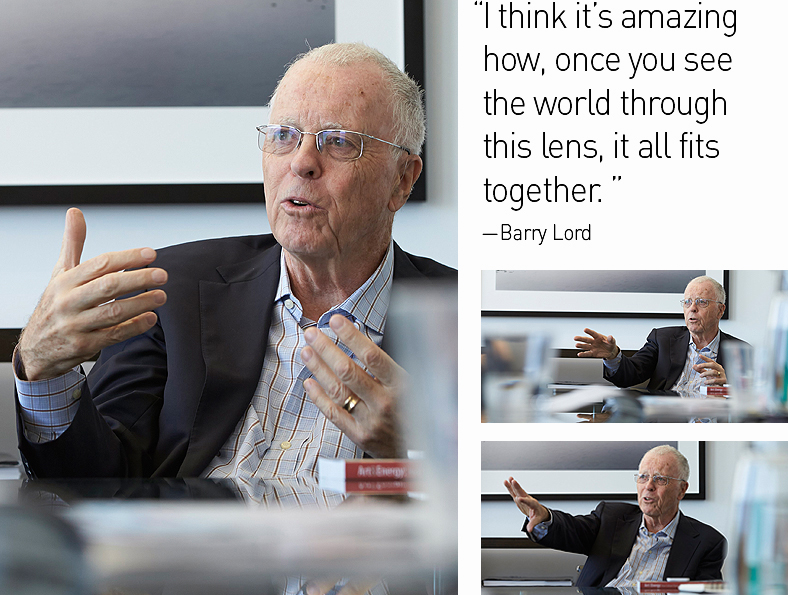
The connection between our energy resources and our culture becomes clearer as one becomes more aware of the effect energy has on our lives. A new book by Barry Lord, Art and Energy: How Culture Changes, launched this September at Toronto’s Gardiner Museum, delves deeper into this relationship, inspiring the reader to think more about how intrinsic the role of energy is in our creativity, our production of art, and our culture in general.
Barry, along with his wife Gail, founded Lord Cultural Resources in 1981, and have since become renowned in the world of cultural capital and museum planning. They have been involved in numerous museum projects all over the world, and as an expert on everything art and culture, Barry is also the author of museum planning resources and manuals.
Peeps visited with Barry at his Toronto offices to hear his thoughts concerning fossil fuels, identity and our recent shift to a culture of stewardship.
Where did you first make this link between energy and culture?
Everybody knows that life depends on energy. All human life and all cultures are dependent on the energy sources that make them possible. Energy is not a neutral abstract that can be switched on or off; there is always an energy source. Without it, we can’t work in society; we have no culture; we are not here.
How does this affect the individual?
It affects each aspect of an individual’s culture—the entire world of meaning they participate in, including who they think they are, who they think others are and how they think they relate. These are the basic questions and cultural constructs that are made possible thanks to society’s energy sources. These energy sources are not neutral. Each one of them brings with it different values and different actions required to access the energy source. Actions and values that in time get embraced by society.
How has this energy-culture link developed throughout history?
Historically, we can see how people have found different ways to define themselves. As the energy sources that made our world changed, people’s identities also had to adjust to the values that each energy brought with it.
Land or property once defined who you were—you were either a peasant or a land-owner—and then the Industrial Revolution changed it all, and the production process became the main focus that defined culture. The production process of coal demanded a certain set of values in order to work effectively, mainly a large disciplined work force. This lead to universal education—a way to teach discipline to people.
Even though people think that the energy produced out of gas and oil is a continuation of coal, there was a change in the process to obtain it and that meant a change in the values that defined culture and the individual. The production of oil and gas needs more knowledge industry and less manpower, turning the focus from production to the consumption of this energy resource. And so a culture of consumerism was born. People have always bought things but to define yourself as a consumer, that is different—credit has become the construct that tells you who you are.
These days the incoming source is renewable energy and along with it a culture of stewardship, the opposite to the culture of consumption. Unfortunately, it’s a culture that is by no means universally accepted yet; but people, little by little, are recognizing it as more sustainable than our current energy source.
Why is renewable energy still controversial even though it has proved to be more sustainable?
Energy displays the same kind of vectors as art, meaning that it has a cutting edge and new ideas that are controversial and that people oppose.
Renewable energy brings with it two revolutionary issues. One questions the notion that energy needs fuel. One of the things renewable energy tells us is that you can do without fuel, thanks to sources like the sun and the wind; and this is repudiation to the culture of consumption. The other issue is the two way [power] grid—how buildings, and even people, can be both consumers and producers.
These two concepts are changing the way society sees the world, and for some it’s perceived as a threat to their identity; and usually if there’s a threat from a hostile power, we are willing to fight for our energy sources. Just like the confederation army fought for slavery and senate members denounce green energy; they realize that it’s getting in the way of production, affecting who they are.
Is this a conscious approval on our part?
It doesn’t matter if people approve it or not; they just accept that it is the energy that fuels our world at the moment. Just like hundreds of years ago when people didn’t care or question slavery. It was just the biggest energy source at the moment and there was no point in discussing that. Even if you do want to say “I’m against one or the other,” we all have to go back to that culture, and so it becomes accepted. When the energy source becomes dominant, no one discusses it anymore and it’s then taken for granted.
How does seeing the world through this perspective help in changing our culture?
I think it’s amazing how, once you see the world through this lens, it all fits together. It can be a key to understanding art history, science and technology, how they all link together and what changes there have been, and what is coming. For me, professionally, there is an application to the museum work—you have to understand that link between energy and culture and art to know what kind of museum the community needs.
One of the themes of the book is the so called energy debate, which I believe is basically a conflict of cultures. It can help us understand issues such as the intergenerational conflict. Prior to coal, there wasn’t the intensity there is now around this issue. Younger people are more open to trying out new energy sources, and so they find themselves in that period when an energy source is starting and the values are controversial. Older people think they can’t do it because their whole value system is dependent on the set of values grounded by the previous energy source. We can now be aware that there is continuing challenges to who we are, and we have to deal with that. ●
_
Barry Lord is an internationally celebrated author of professional literature for the museum field and co-president of the cultural planning firm, Lord Cultural Resources. www.lord.ca Watch the book launch for Art and Energy: How Culture Changes at the Gardiner Museum, September 2014 at: www.youtube.com /. Purchase Art and Energy: How Culture Changes at www.amazon.ca
